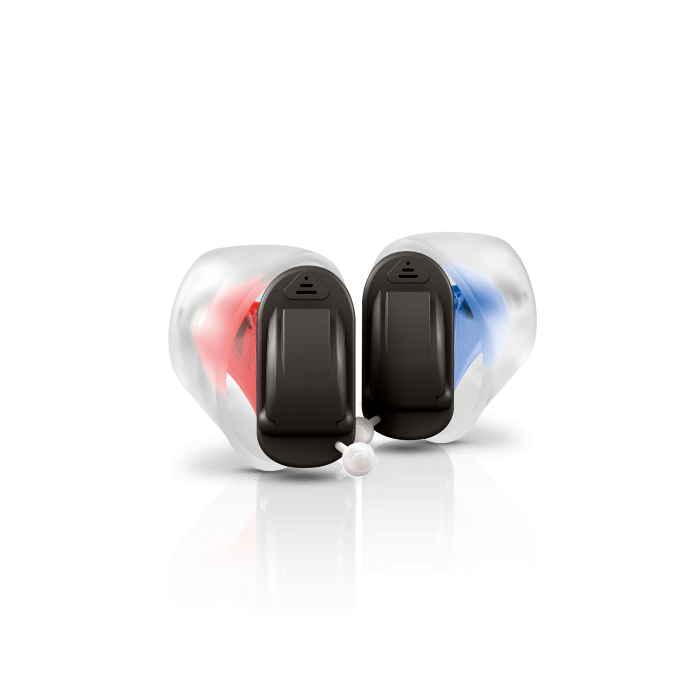
Smart hearing aids from hear.com - world's leading hearing care provider
CROS & BiCROS
High-performance technology for your ears
If one ear is completely deaf, a normal hearing aid is no longer an option. The amplification of sound is insufficient to stimulate the inner ear. With one-sided listening, sounds can no longer be assigned to their direction and background noises cannot be distinguished. But here, too, there are special hearing solutions – individually tailored to your needs.
In the following you will find information about the so-called CROS and BiCROS care, with which you can continue to hear directionally even in the case of one-sided deafness and thus effectively improve your quality of life.
Do you have any further questions and would you like some information regarding hearing aids? Then give us a call! Our hearing aid experts are available to help and will be happy to advise you!
Table of Contents
- Directional hearing
- CROS
- BiCROS
Directional hearing
CROS and BiCROS hearing aids stand for spatial hearing despite one-sided deafness. When hearing with two healthy ears (binaural hearing), the sound hits both ears with different strengths and frequencies. This enables the brain to localize the direction of the noises and orient itself in the room. A person with normal hearing can locate the chirping bird – for them it is no problem to “hear” its position – they are able to “see” with their ears. For one-sided deaf people, on the other hand, the bird always sings on the side of the hearing ear. Turning the head cannot change that either – directional hearing remains impossible. In addition, it is extremely difficult for these people to be able to concentrate on one sound with loud and diffuse background noise – a functioning conversation becomes a problem.
A one-sided hearing loss that cannot be remedied with a “normal” hearing aid can be caused by trauma to the brain, tumors (such as acoustic neuroma) or already congenital impairments. A CROS or BiCROS system helps people to perceive spatial sounds more effectively despite one-sided deafness. The highly developed technology of these hearing aids directs sounds from the non-hearing to the hearing ear and enables precise processing in the brain. Read below how CROS and BiCROS hearing aids can make your life easier.
CROS
With classic hearing aids, the microphone and earpiece are close together – they amplify the signal at the respective ear. Since this does not lead to success in unilateral deafness, scientists have developed a new concept: the CROS system (Contralateral Routing Of Signal). Here the receiver and microphone are decoupled and placed in different places. The sound is picked up by the microphone on the deaf ear and passed on to the healthy ear, where the listener is.
The normal hearing of the healthy ear is not affected. A few years ago it was common practice to hide the necessary technology in a glasses frame. The microphone was attached behind a bracket, the conductive cable worked into the frame and led to the receiver on the other side of the glasses.
BiCROS

But what to do if the second ear no longer works properly either? Thankfully there’s a solution!
As with the CROS system, the microphone picks up the signals on the deaf ear and sends them wirelessly to the other side of the ear.
Since there is also a hearing loss in the better ear, there is also another microphone on this side, which in turn receives signals. Both signals are then amplified to enable the best possible hearing





